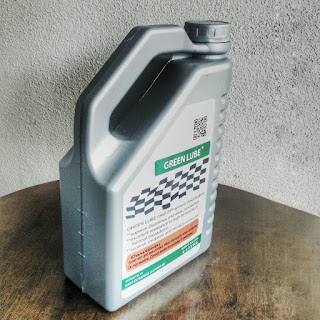Whether you have questions pertaining to motor oil performance, synthetic oils or how to recycle your used oil, you can get the answers you’re looking for below.
1. Is it ok to switch motor oil weights, for example, from a 5W-20 to a 10W-30?
It depends. Some vehicle manufacturers provide a range of recommended motor oil viscosity grades based on the outside temperature in which the car is driven. Other manufacturers recommend the use of only one motor oil viscosity grade. For best engine performance, always follow the manufacturer's recommendations found in your vehicle’s owner’s manual.
2. Is it ok to use 5W-30 in a car if the owner's manual calls for 5W-20?
Using a heavier grade than recommended may cause decrease in fuel economy, higher engine loads and eventually shortened engine life. Using a lighter grade than recommended may result in excessive mechanical wear and reduced engine life. For maximum engine performance, follow the recommended motor oil viscosity and maintenance schedule provided in your vehicle's owner's manual.
3. What does the "w" in a grade of motor oil stand for?
The "w" in motor oil stands for winter. The first number in the oil classification refers to a cold weather viscosity. The lower this number is, the less viscous your oil will be at low temperatures. For example, a 5W- motor oil will flow better at lower temperatures than a 15W- motor oil. The higher number, following the “w” refers to hot weather viscosity, or how fluid your oil is at hot temperatures. The higher the number, the thicker the oil at a specified temperature.
4. Is thicker oil better?
In some circumstances, thicker oil can be used to compensate for increased bearing clearances (gaps between bearing and rotating shaft) that have developed over the years. A large change in bearing clearances can result in poorer lubrication. For best performance always follow the recommendations for motor oil viscosity in your vehicle's owner's manual.
5. When does it make sense to use straight weight oil (SAE30) versus a multigrade oil (5W-30)?
Straight weight oil is never recommended for use in a system that requires a multi-viscosity oil. Straight weight oils are generally recommended for smaller engines or older vehicles that were made before multi-viscosity oils were produced.
6. Is switching types of motor oil (conventional, synthetic, etc.) harmful to my vehicle's engine?
Conventional, synthetic blend, synthetic and high mileage motor oils are compatible and will not harm your vehicle's engine. For maximum engine performance, follow the motor oil type recommendation provided in your vehicle’s owner’s manual.
7. Is it true that older cars must only use conventional oil?
No.
8. Can motor oil significantly improve horsepower?
Yes. Motor oil formulas with friction modifiers and additives help to improve horsepower. Lower viscosity (lighter) oils can improve horsepower providing that they separate moving parts and maintain engine durability. The optimum oil viscosity for a given engine is specified by the automotive manufacturer.
9. When motor oil is better for “severe” conditions, what are "severe" conditions?
Severe conditions include stop-and-go driving, consistent idling, pulling, towing, dusty environment or high or low ambient temperatures.
10. If I don't drive in severe conditions can I change my oil less often?
Your owner's manual may provide different oil change intervals for both regular driving and severe driving.
11. Is it a good idea to let your car warm up (idle)?
Most modern cars don’t require idling time before driving.
12. Can I improve motor oil performance in my vehicle by using aftermarket additives?
Generally no. Most vehicle manufacturers do not endorse using aftermarket additives. Certain additives may temporarily improve performance of older engines. (We recommend you check with the vehicle manufacturer before using any aftermarket additive.)
13. Are all additives the same?
No. Additives contain different formulations that affect certain parts of the engine differently than other additives.
14. Does motor oil expire? If not, how long does motor oil generally last?
When stored under optimal conditions, the product remains stable for an extended period of time. It can be used as long as the American Petroleum Institute (API) rating on the label continues to meet or exceed the requirements listed in your car’s owner's manual. If the rating is still current, we advise you shake the container before use to blend any additives that may have settled.
15. Does motor oil ever wear out or does it just get dirty?
Yes, motor oil does break down. Oil additives are consumed and combustion by products build up in the oil. Changing your motor oil on a consistent basis removes combustion byproducts and replenishes the additives.
16. Does my vehicle's oil filter need to be changed with every oil change?
Recommends you replace the oil filter with every oil change, as this will eliminate any risk of contaminants trapped in the oil filter (e.g., dirt) from re-entering the new oil. Always be sure to follow the oil change frequency recommendations in your vehicle’s owner’s manual and to use an oil filter meeting automotive manufacturers’ guidelines: e.g., USCAR.
17. Are conventional motor oils natural, unprocessed products?
The base oils used in conventional motor oils do come from petroleum, but they have gone through extensive refining processes. These base oils are compounded with various additives, which provide important properties such as antiwear, friction reduction and long life.
18. How do I properly dispose of my used motor oil?
Usually, you can recycle your used motor oil at any auto parts store. Ensure you store your used motor oil in a tightly sealed bottle or container.
Posted by: GREENLube
Read More


















